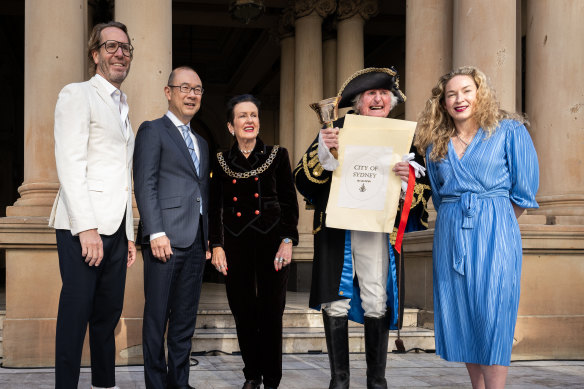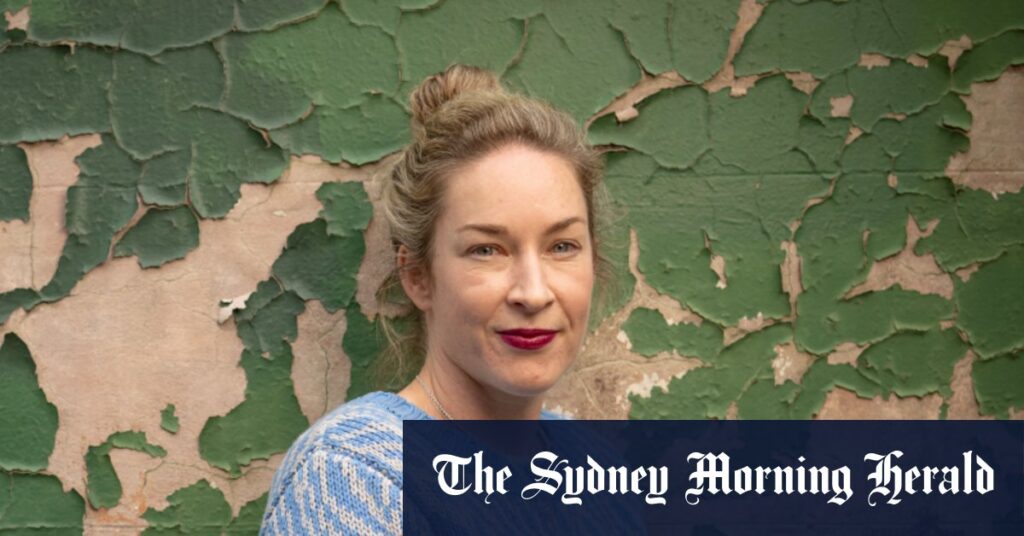Originally from Somerville on Victoria’s Mornington Peninsula, Miller took her first overseas trip to Sao Paulo in Brazil. It was there she fell in love with the rhythm of cities.
“You would go out at night, and you would dance, and then you would do this, and then you would do that. Your night began at 10pm and wouldn’t finish until 10am the next day,” she says.
Things are different in Sydney. In her first term from 2016 to 2020, Miller was closely involved in amending the council’s development control plan, enacted in 2019, to encourage late-night trading and help resuscitate Sydney’s ailing nightlife.
During this year’s election campaign, Moore was heckled at a rowdy candidates’ forum for saying these policies put Sydney in a better position than Melbourne, where nightlife is notably vibrant and permissive.
The grim state of Oxford Street, with many vacant shopfronts, was a major issue in the recent election campaign.Credit: James Alcock
Miller says the hostile reception was unfair, but she wants to revisit the issue this term, particularly the prevalence of vacant shops and shuttered venues that have turned the city’s high streets – including Oxford Street, Glebe Point Road and Darlinghurst Road – into ghost towns.
Loading
“There are heaps of lazy spaces. It’s the same issue for high streets as for housing,” she says. “It’s more financially viable for a person to leave a shopfront empty than to rent it out.”
Councils cannot necessarily do much about these issues. For example, they can’t impose a levy on landlords who prefer to keep a place boarded up than lease it to a budding bar owner at a lower price.
Miller says she doesn’t have the answers yet, but she is getting to the crux of the problem. “If you own a shopfront, and you have to lower the rent, you lower the valuer of the asset. So when it comes time to sell it, you don’t get as much,” she says.
“I can understand that from a purely financial point of view, but [the knock-on effect on] communities and the vibrancy of a high street is really significant.

Town Crier Graham Keating announcing the City of Sydney’s Lord Mayor, Clover Moore (centre) and Clover Moore Independent Team councillors for the next four-year term (left to right) Adam Worling, Robert Kok) and Jess Miller on Thursday.Credit: Louie Douvis
Coming to grips with “why places are empty” means the council can foster “24-hour activation and vibrancy”. It also means embracing tension, grittiness and “fights” that have shaped Sydney, instead of the “shiny” things the city tends to gravitate towards now.
“Cities that are really vibrant, including Sao Paulo and Melbourne, they have this beautiful tension about them,” Miller says.
“Cool stuff is not always shiny and beautiful and easy, there’s a creative tension that can exist. You could feel the energy returning [after the lockout laws] because people had been fighting for something … We were getting there and then COVID really just smashed us.
“We market ourselves for the shiny: sparking beautiful harbours, [the] Sydney Opera House. But I think the most marketable part of Sydney is actually the characters and the community and the people and the stories and the fights.”
Councillor Jess Miller’s top five policies to make Sydney cooler
- No “lazy spaces”. Identify the levers we can pull to encourage landlords to have tenants, especially on high streets.
- Champion the East Sydney Creative Precinct to attract and retain creative talent, with a focus on affordable housing for art school students.
- Transform short-term holiday accommodation into long-term market rentals by working with the state government.
- Champion the Greening Sydney program and unlock 13 hectares of public space in laneways for beautification, community and biodiversity.
- Work with the business chambers in Newtown and Erskineville to protect and enhance the King Street neighbourhood “vibe”.
The Morning Edition newsletter is our guide to the day’s most important and interesting stories, analysis and insights. Sign up here.
Read the full article here
